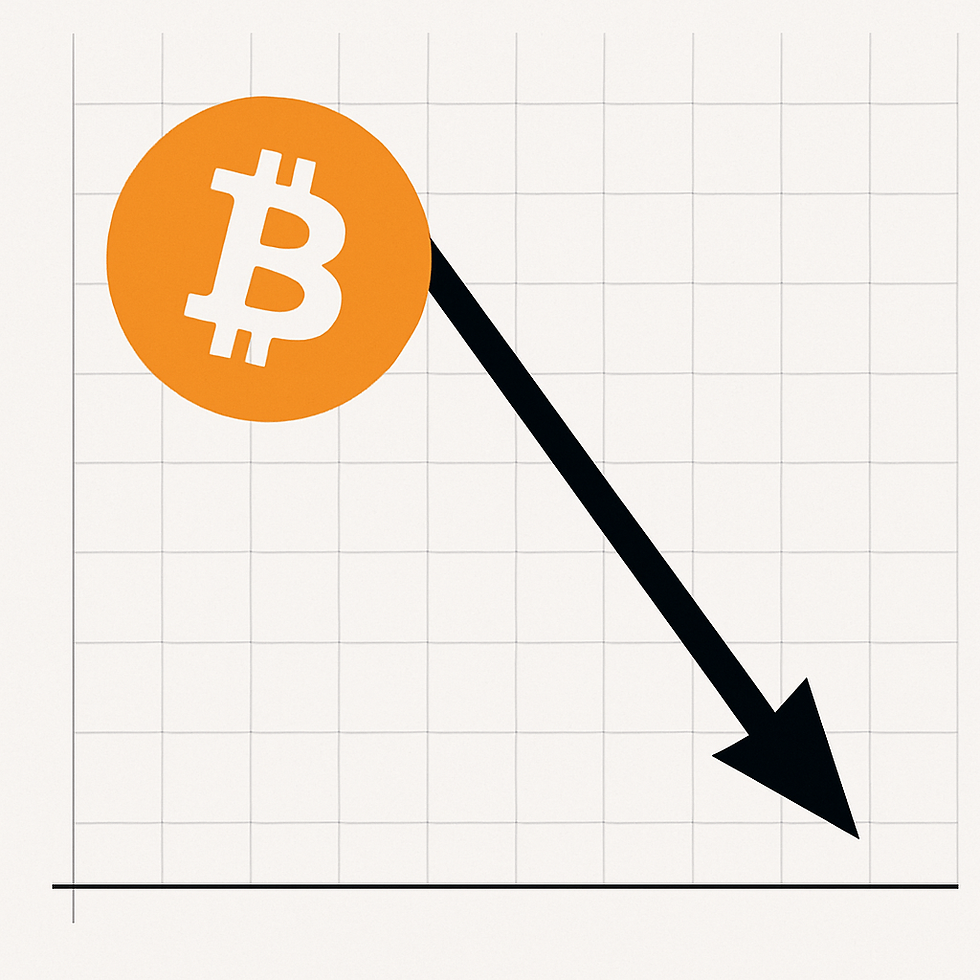Bitcoin’s Halving: A Fatal Flaw Masquerading as a Feature
- WireNews

- May 24
- 4 min read
by Ram ben Ze’ev

The breathless chorus of Bitcoin believers rejoices every few years with religious zeal over a curious ritual known as “the halving.”
This event, hardcoded into Bitcoin’s protocol, reduces by half the number of new coins awarded to miners for securing the network and processing transactions.
Its supporters herald it as a stroke of genius — a deflationary safeguard against inflation.
But let’s set aside the hymns of blind faith and take a hard, sober look at what halving truly represents: not an innovation, but a fatal flaw that dooms Bitcoin’s future as a functional currency.
The Illusion of Scarcity
Bitcoin’s defenders will tell you that halving creates scarcity, mimicking the way gold becomes harder to mine over time. But Bitcoin is not gold. It has no intrinsic value, no industrial use, and no historical basis of trust. Unlike gold, which is tangible and stable, Bitcoin is volatile and intangible. Indeed, without an Internet connection, it does not exist. Scarcity alone does not confer value — usefulness does. And here lies the contradiction: Bitcoin’s very design undermines its utility.
Each halving makes mining less profitable. Fewer incentives mean fewer miners. Fewer miners mean a slower network. A slower network means longer transaction times, higher fees, and a diminished user experience. So what are we left with? A so-called currency that becomes more difficult to use with time — a self-defeating model by any rational economic standard.
The Declining Incentive Spiral
Let’s examine what really powers Bitcoin: the miners. These are the individuals and firms that burn vast amounts of energy to process transactions and secure the network. And they do it not for altruism, but for reward. As the block reward halves, miners must rely increasingly on transaction fees. But there’s a problem: the market doesn’t want to pay high fees for simple transactions.
Ask yourself: would you pay $20 in fees to send $50 to a friend? Of course not. And yet this is already reality during periods of congestion on the Bitcoin network. As more miners exit due to unprofitability, the network slows down, which in turn increases fees — a vicious cycle. The protocol adjusts difficulty over time, yes, but it cannot manufacture incentives out of thin air. Halving may slow the creation of new Bitcoin, but it also slows down the very machinery that keeps the network alive.
Volatility and the Death of Trust
In the past 24 hours alone, Bitcoin’s value has swung by over $3,500. This is not a currency — it’s a casino chip. In any functional economy, a currency must be a stable store of value and a predictable medium of exchange. Bitcoin is neither. Its volatility punishes both buyer and seller. Imagine invoicing a client in Bitcoin, only for your earnings to evaporate by the time the transaction clears.
This is not a rare occurrence. This is the norm. Volatility at this scale makes real-world adoption untenable. Merchants convert Bitcoin instantly to fiat to protect themselves, nullifying any actual use of the asset as money. What remains is a speculative toy, not a trusted tool of trade.
Halving: A Solution to a Problem That Doesn’t Exist
Bitcoin’s halving mechanism is often framed as a bold answer to fiat inflation. But inflation in fiat systems is not inherently evil — it supports lending, investment, and economic growth. Moderate inflation encourages spending and productivity. Bitcoin’s hard cap and halving do the opposite: they hoard value, disincentivise circulation, and punish use.
And let us not forget: Bitcoin’s scarcity is artificial. It’s a narrative choice, not a necessity. Other cryptocurrencies have adopted more flexible supply models — and some are doing it better. Scarcity is only meaningful when it serves a functional system. In Bitcoin’s case, it simply inflates the price at the expense of utility, rewarding early adopters while leaving newcomers with a hollow intangible asset of questionable practical use.
The Inevitable Decline
Bitcoin’s future as a viable global currency is, in truth, already foreclosed. It is too slow. Too expensive. Too volatile. Its halving schedule is a countdown, not to success, but to irrelevance. As block rewards vanish and miners dwindle, Bitcoin will struggle to maintain security without massive, unpredictable spikes in transaction fees — which users will refuse to pay.
It will continue to exist, of course. Like gold, it may remain, but as a depreciating store of value for some — though even that is debatable. That said, it will never become what it was imagined to be: a replacement for fiat currency. The halving is not its crown jewel; it is the ticking clock of its undoing.
The next time the crypto faithful celebrate the halving, understand what they’re really cheering for: the slow death of their own system. Bitcoin, far from a revolutionary currency, is a broken promise — an asset born in rebellion, but bound by its own flawed code to a future of diminishing utility.
>>>> BUY ME A COFFEE <<<<
###
Bill White (Ram ben Ze'ev) is CEO of WireNews Limited, Mayside Partners Limited, MEADHANAN Agency, Kestrel Assets Limited, SpudsToGo Limited and Executive Director of Hebrew Synagogue







